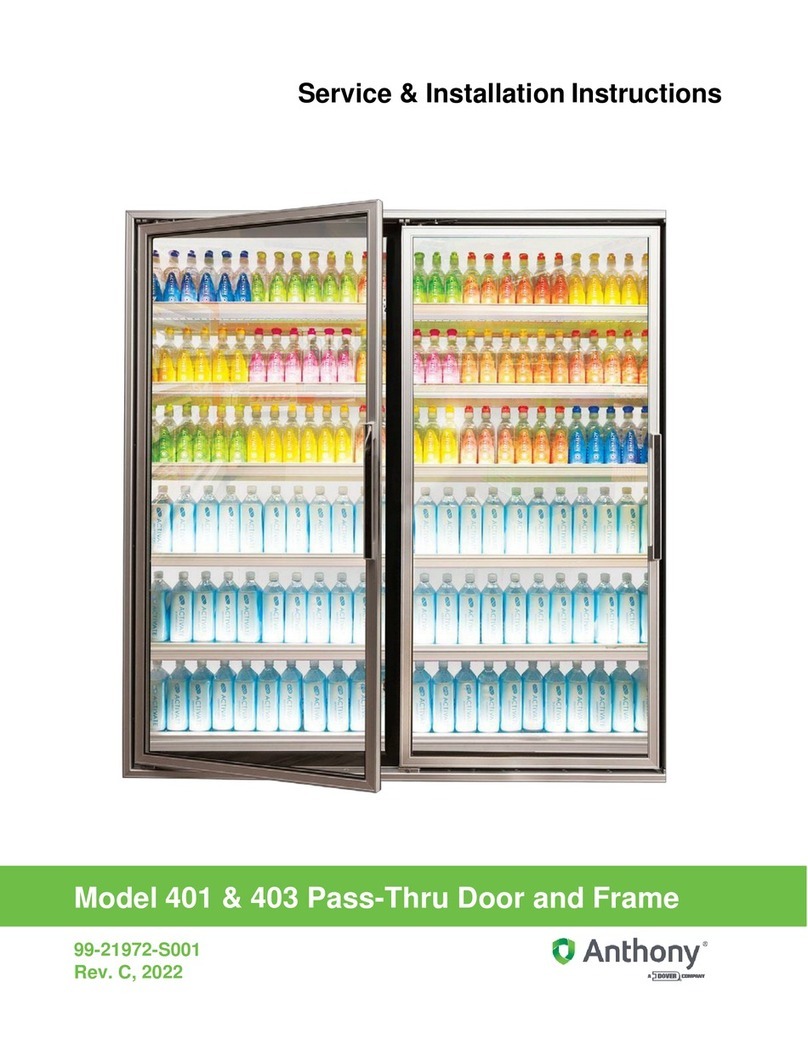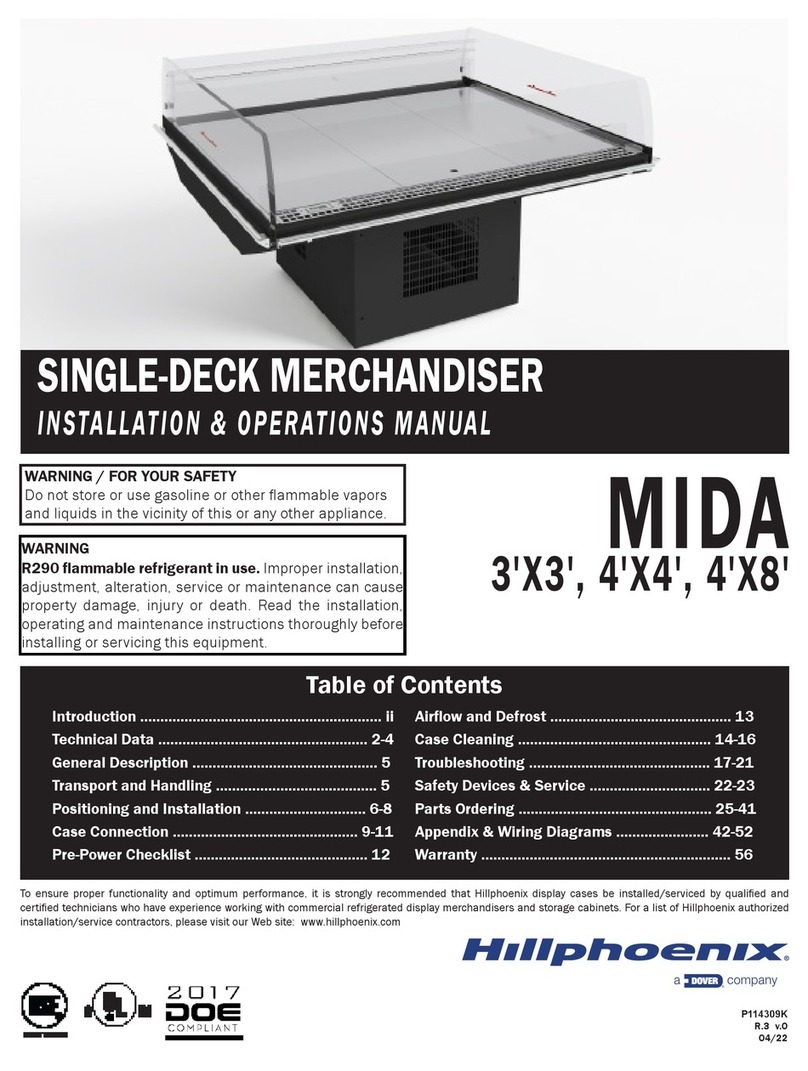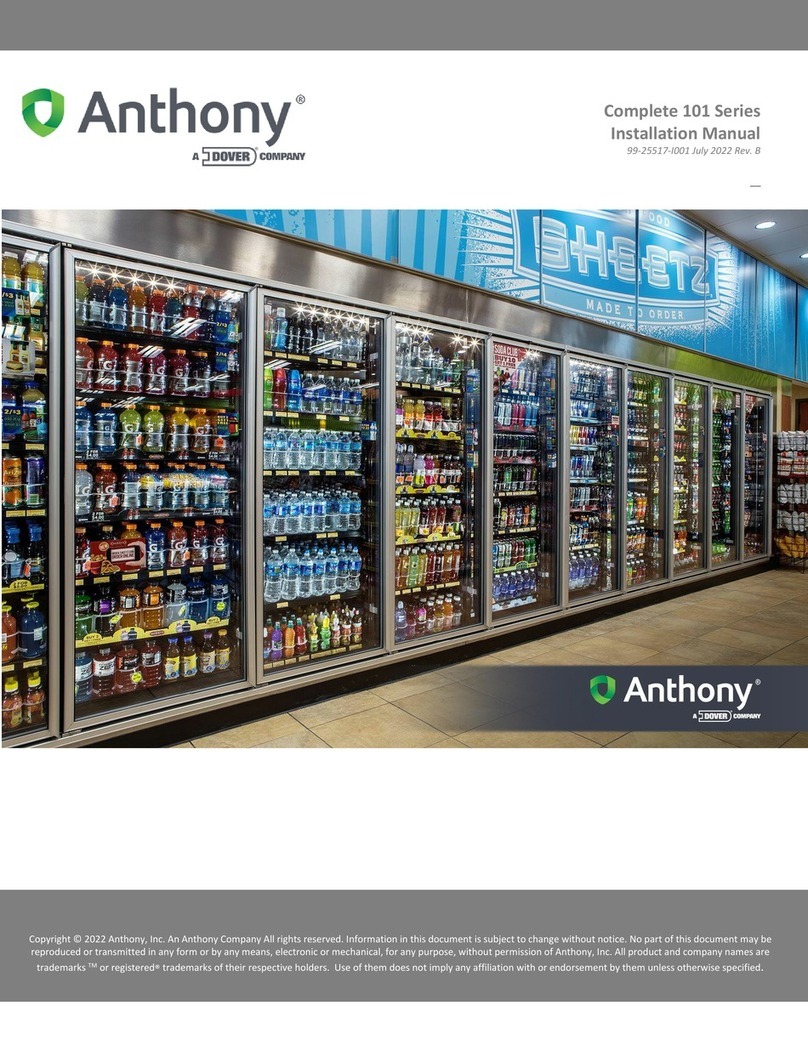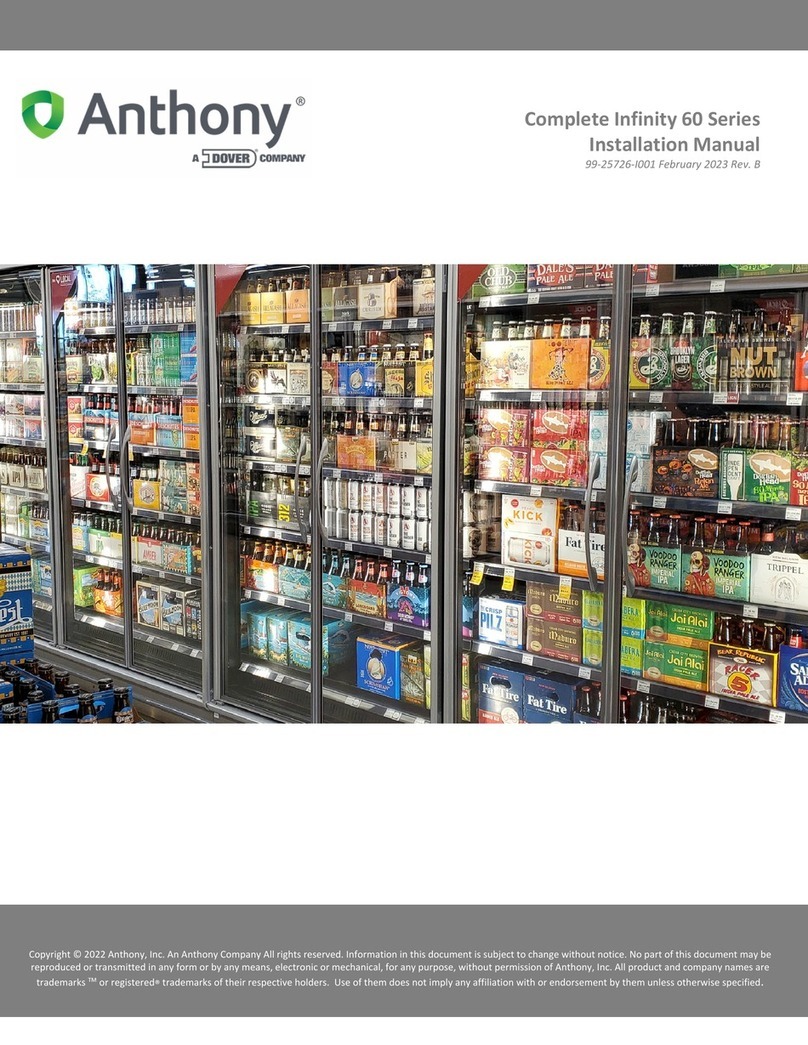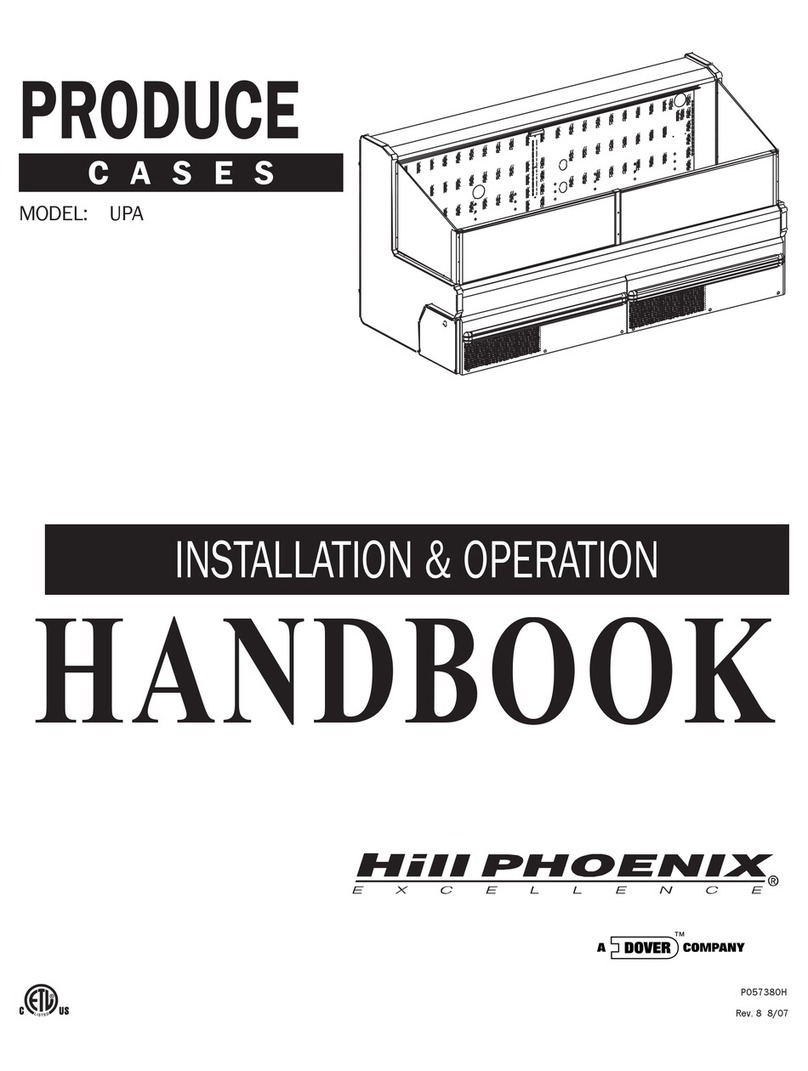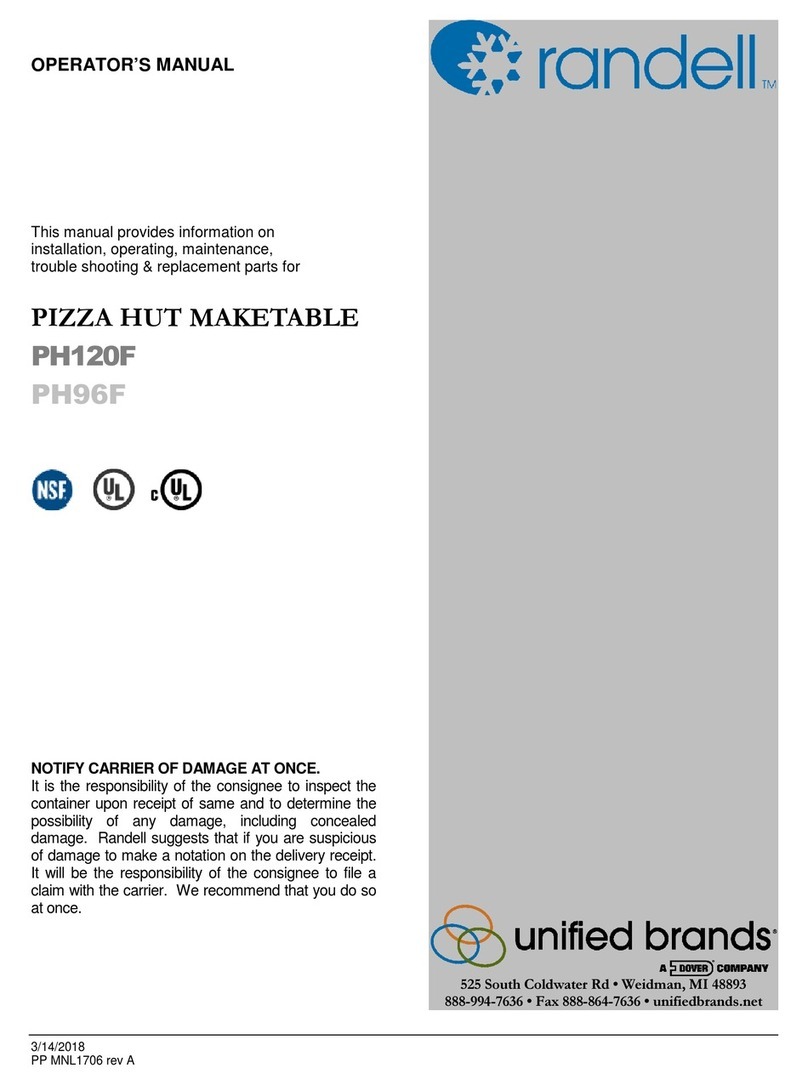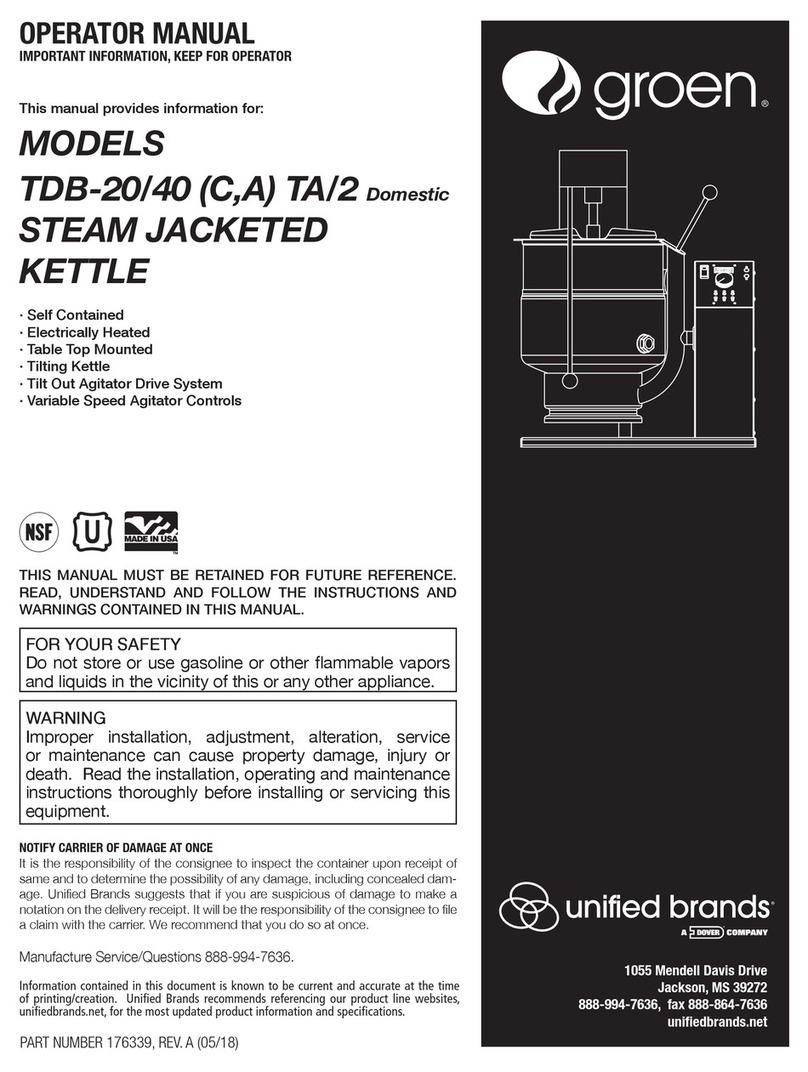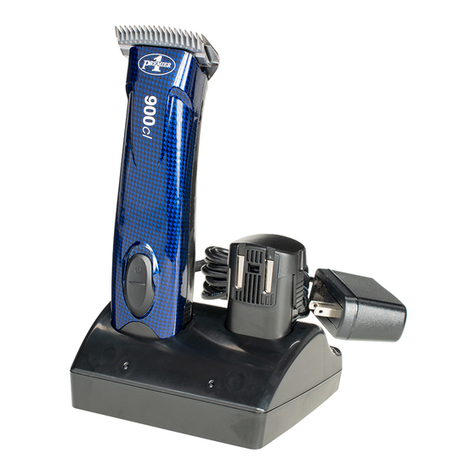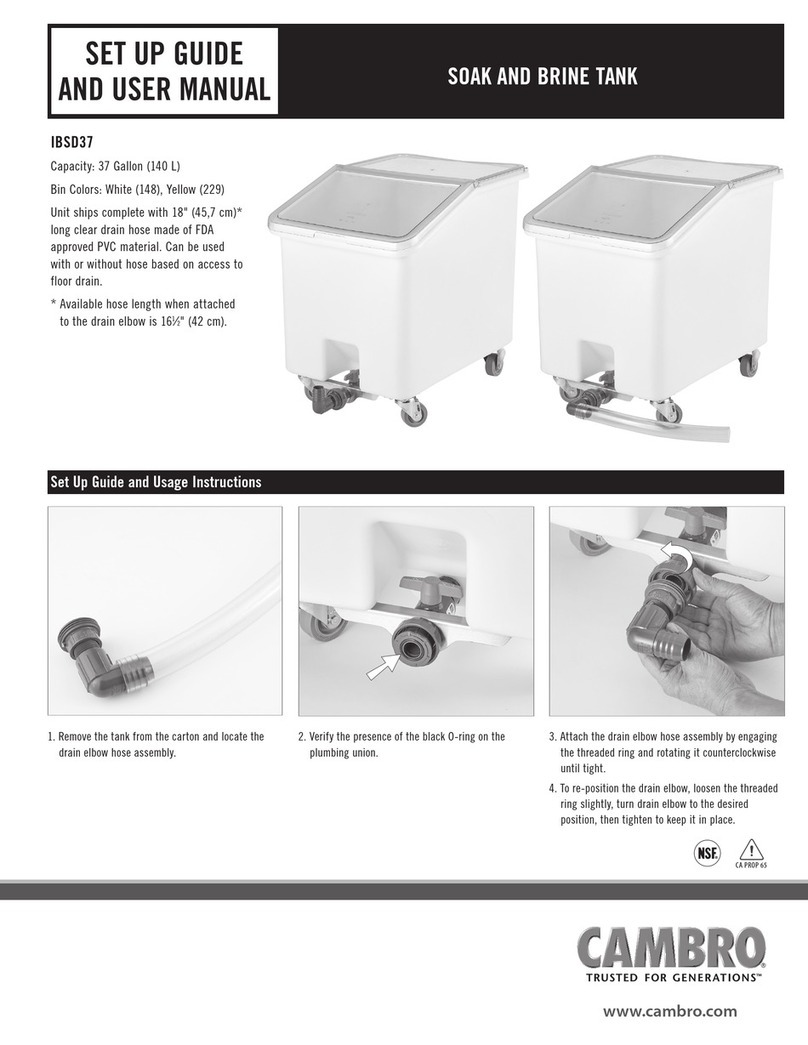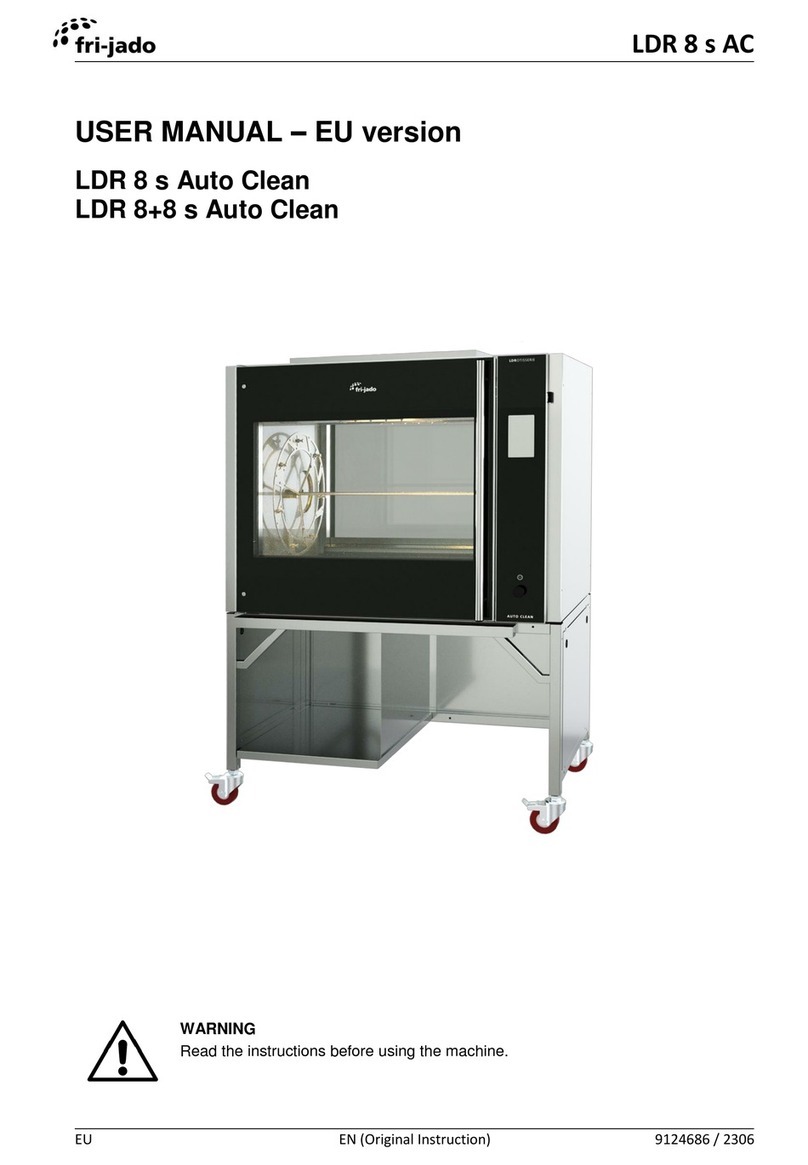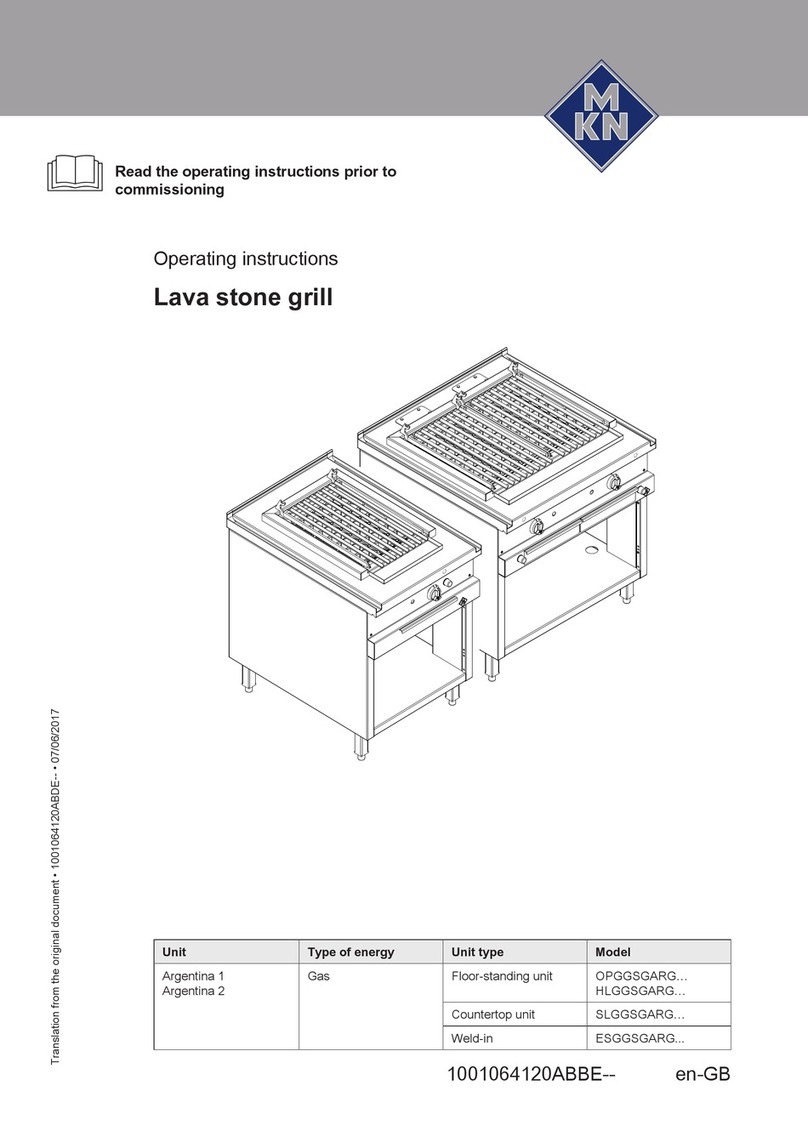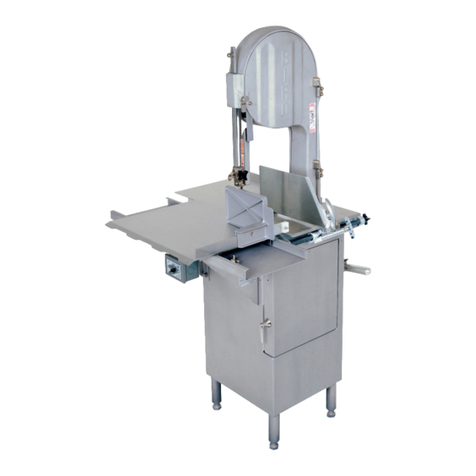Installation & Service Manual N6F/N6FL
January, 2005
Defrost Information
See “General-UL/NSF I&S Manual” for
operational descriptions for each type of
defrost control.
Defrost Control Chart
Defrost
Defrost Defrosts Duration Term.
Type Per Day (Min) Temp.
Electric 2-3 40 55°F
Gas 3-4 22-25 60°F*
*Use 70°F with electronic defrost sensor.
The diagram shows the location for each
defrost type that uses a klixon.
NOTE
• The termination klixon (55/35 Settings) for
electric defrost is located in the right
hand end of the upper electrical raceway.
• The termination klixon for gas defrost is
located next to the rear coil bypass check
valve.
CAUTION
If electronic sensors are used in place of the
klixons, the sensors must be located in the
same location as the klixons for that defrost
type. Any other locations will effect the
refrigeration efficiency of the case.
N6F Optional Hot Gas Defrost Operation
Requirements
When reverse cycle gas defrosting option is
used, it should only be applied to multiple
compressor systems (Parallel racks). A maxi-
mum of not more than 25% of the load on a
given rack should defrost at one time
because the defrosting cases become a
condenser during the defrost period and the
other refrigerated cases must provide enough
heat load to keep a compressor operating.
Do not defrost more than 24 feet of the N6F
at one time to limit the amount of refrigerant
used in that circuit during the defrost.
Insulated partitions must be used between
cases in the same lineup that have
different defrost times.
Defrosts are initiated by a multi-circuit defrost
clock or an electronic defrost controller. At
the beginning of gas defrost the refrigeration
is stopped and the gas is diverted in a
reverse direction through the suction line to
the display case. The refrigeration should be
set to remain off for the complete failsafe time
plus a 5 minute drain off or clear time period.
This type of defrost operation allows the
problem areas in the case to completely clear
without subjecting the refrigerated product to
excessive warm up.
A defrost termination “klixon type” open on
rise thermostat is mounted (on the left hand
side) next to the rear coil check valve that
bypasses defrost refrigerant flow around the
expansion valve. The defrost termination
device along with the mechanical or electron-
ic defrost control should be set up to cycle or
pulse the hot gas valve during the defrost
time period. If you use a mechanical clock,
you should wire it in parallel with the hot gas
valve. If the return liquid temperature rises to
70°F, the hot gas valve should be closed until
the return liquid temperature cools to 40°F
and then the hot gas valve will reopen and
provide additional heat. This cycling will
continue until the total defrost time has
elapsed. Note that the “klixon type”
thermostat has a time lag associated with it’s
operation so its actual setting is 60°F, but if
an electronic sensor is used for termina-
tion, it should be set at 70°F termination
temperature because it is because it is faster
reacting. Also, if used with an electronic
controller, cycle the hot gas valve when the
lowest sensor temperature (minimum) has
reached 70°F.
Page 7

